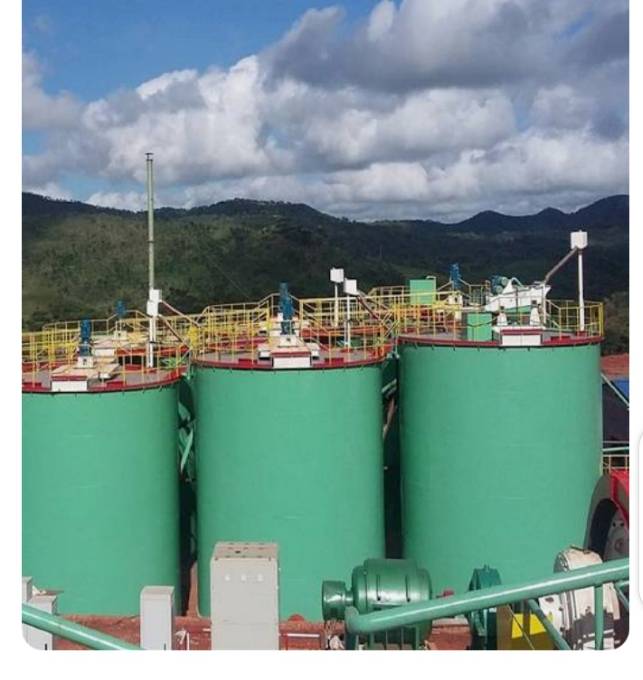Extraction of gold by flotation process is based on the difference of physical and chemical properties of the ore surface, and is processed by to make the useful mineral adhere to the bubble to achieve the purpose of gold extraction.
Principle
Gold is an easy-floating mineral, so extraction of gold by flotation process has always been one of the effective ways to process gold-bearing ores. In primary gold deposits, gold minerals often coexist with sulfide minerals such as pyrite, chalcopyrite, galena, and sphalerite. These minerals are both easy-floating minerals and form stable mineralized foams. They are the ideal carrier minerals for gold minerals. The extraction of gold by flotation process can maximize the enrichment of gold into the sulfide concentrate. The flotation process is mainly used to process pulse gold ore. Extraction of gold by flotation process can also be used to process gold alluvial, but since it can be economically recovered by the low cost gravity extraction process, extraction of gold by flotation process is rarely used in industrial production.
Flow
1. Preparation for the ore before the extraction of gold. The raw ore is crushed, screened, ground and classified (Sometimes need washing and desliming) to obtain the appropriate particle size, and then enters the flotation process stage.
2. Add flotation reagent. The surface properties of minerals are changed by the action of various chemicals, the stability of the bubbles is controlled, the ion composition of the slurry is adjusted to create suitable flotation conditions, and the separation and enrichment of minerals is realized.
3. Agitation with aeration. The air is dispersed into bubbles by mechanical agitation, and the ore particles are sufficiently suspended and promote dissolution and dispersion of the flotation reagent.
4. Mineralization of bubbles. The extraction of gold process can only be achieved if the selectivity of the useful mineral particles is easily adhered to the bubbles and the gangue is difficult to adhere to the bubbles.
5. The discharge of mineralized foam. The foam product is scraped off by a scraper or automatically spilled into a concentrate.
Characteristics
1.Advantages
(1) Extraction of gold by flotation process is commonly used to process gold-bearing sulfide ore with high floatability, because the flotation process can maximize the enrichment of gold into the sulfide mineral concentrate, and the gold extraction process cost is low.
(2) Extraction of gold by flotation process is also used to process polymetallic gold-bearing ores such as gold-copper, gold-lead, gold-bismuth, and gold-copper-lead-zinc-sulfur ore. For this type of ore, the flotation process can effectively identify and extract various gold-bearing sulfide concentrates, which is conducive to the comprehensive recovery of mineral resources.
(3) For so-called “refractory ores” that cannot be directly extracted by amalgamation or cyanidation, it is also necessary to use a combined process including flotation gold extraction process.
2.Disadvantages
(1) It’s difficult to use flotation process for extraction of coarse-grained gold ore, especially when the gold grain is larger than 0.2mm.
(2) For ore hard to reach the flotation conditions, such as quartz-bearing gold ore without sulfides, it is difficult to obtain stable flotation foam after slurring. So the performance of extraction of gold by flotation process won’t be excellent.
(3) For gold flotation process, crushing and grinding process is necessary and a huge amount of flotation reagent must be consumed. Therefore, flotation process means higher cost than gravity separation and amalgam treatment in terms of economic indicators.
Case
The main metal minerals in a gold-bearing quartz mine in China are galena, chalcopyrite, pyrite, native gold, and gangue minerals are mainly quart. In the extraction of gold by flotation process, sulfurous acid and lime are used as inhibitor, copper sulfate as activator, ethy| xanthate and butyl xanthate as collectors and as foaming agent. The dosage of every agent is 15g/t of the pine oil , 130-140g / t of xanthate, 4000g / t of lime, 350g / t of copper sulfate, and 40L/ t of sulfuric acid. The obtained gold-copper concentrate contains 23% copper and 150g/t gold, and gold-lead concentrate contains 58% lead and 40g/t gold. The total recovery rate of gold is 91%.


